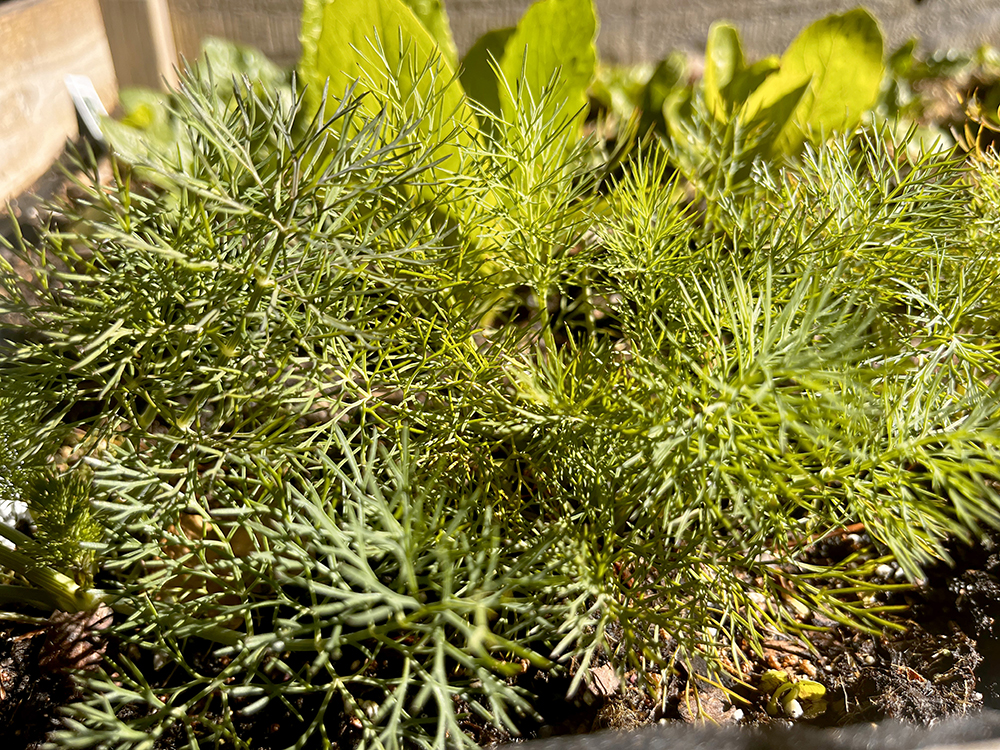Let It Grow
By Tammy Thornton
When considering planting a pollinator garden, it’s tempting to simply fill a bed with all of the colorful flowers that catch your fancy at the garden center, step back, and hope that your dinner party is well-attended. While you may attract some beautiful winged guests passing by, it would be like skipping past the main entree and only offering dessert to your hungry friends. A little more planning should be in order, with special thought given to the various stages of these pollinators. Let’s start at the beginning. Though butterflies and other pollinators will seek nectar from flowers, female moths and butterflies also scope out suitable places to lay their eggs, and not all plants are created equally. The larvae of moths, butterflies, and other insects feed on specific plants. If you’d like to attract certain pollinators to your garden, you will need to consider not only the flowering plants that provide nectar and pollen, but also those that serve as host plants for hungry caterpillars.
Monarch butterflies are often cited as examples of the necessity of host plants. Though there are different types of milkweed in South Jersey (including common milkweed, swamp milkweed, and butterfly weed), monarch butterfly caterpillars must have milkweed to survive. The caterpillars of other butterflies also require specific plants, but some have a wider palate and can dine on a variety of plants.

Bushes and trees can also play the host for pollinators. You may have already spied the spring azure butterfly flitting among your flowers. But the host plants for the caterpillars of this butterfly include meadowsweet and New Jersey tea shrubs and dogwood trees. The adult butterflies will enjoy nectar from the flowers of dogbane, privet, New Jersey tea, blackberry, and milkweed, among others. Our state flower, the common blue violet, is the host plant for the caterpillars of different types of fritillary butterflies. The Great Spangled Fritillary caterpillar cannot survive without violet leaves. This time of year, you should see these violets popping up all over your yard. They will also provide an early source of nectar for butterflies and pollen for bees.
Once your pollinator garden is thriving, be aware that the caterpillars will look much different than when they become adults. You may think a “bad” guy is munching in your garden, only to realize it’s the larva of a swallowtail. Some of these visitors to your pollinator garden may give you a scare. The caterpillars of the spicebush butterfly are the stuff of nightmares. Their eyespots, which aren’t really eyes, cause them to look like menacing snakes. With a face that only a mother could love, the creepy look helps protect them from predators. However, like the transformation of the ugly duckling, these caterpillars turn into the most beautiful of butterflies.
Of course, one of the best parts of a pollinator garden is attracting bees, moths, butterflies, and hummingbirds to the nectar and pollen in your garden. Monarda, or bee balm, blooms with crazy flowers that look like fireworks, just in time for the Fourth of July. They are hummingbird magnets. Once bee balm starts blooming in my garden, I am constantly seeing hummingbirds hovering among the vibrant red flowers, seeking nectar. Use different varieties of flowers that bloom at different times, to provide constant sources of pollen and nectar. Plant the same types of flowers together in masses to help the pollinators find the flowers more readily. Butterflies are also attracted to rotting fruit such as bananas and oranges. Be sure to plant extra herbs to feed both you and the butterflies. You may spot a black swallowtail caterpillar on your dill, parsley, or fennel.
A buzzing garden is a happy garden. Bees checking out your flowers will also pay a visit to pollinate your fruits and vegetables. Be sure to save some peaceful moments to sit quietly in your garden and immerse yourself in the little haven you have created. You will experience magical moments, like a hummingbird buzzing in your ear and then staring you down for a moment in curiosity. When you take the time to sit quietly, your eyes will be opened to a secret world all around you.
We would love to hear from our readers. What’s your favorite pollinator plant? Send your comments and questions to: shorelocalgardener@gmail.com.
Tammy Thornton lives with her husband, children, and crazy pets while enjoying a life of gardening, cooking, and going to the beach.










